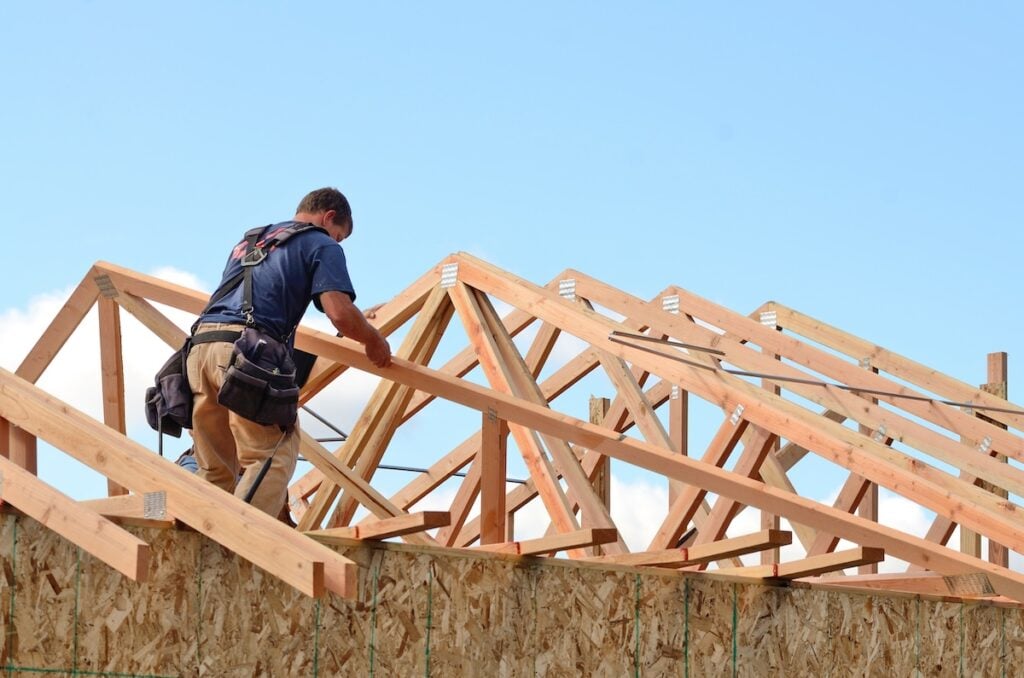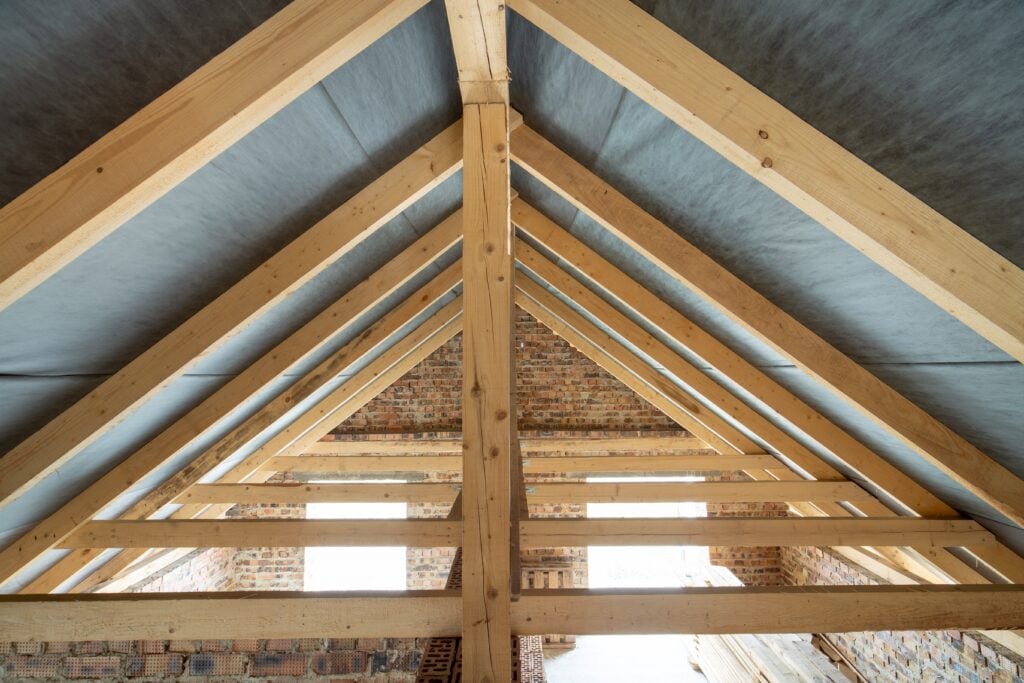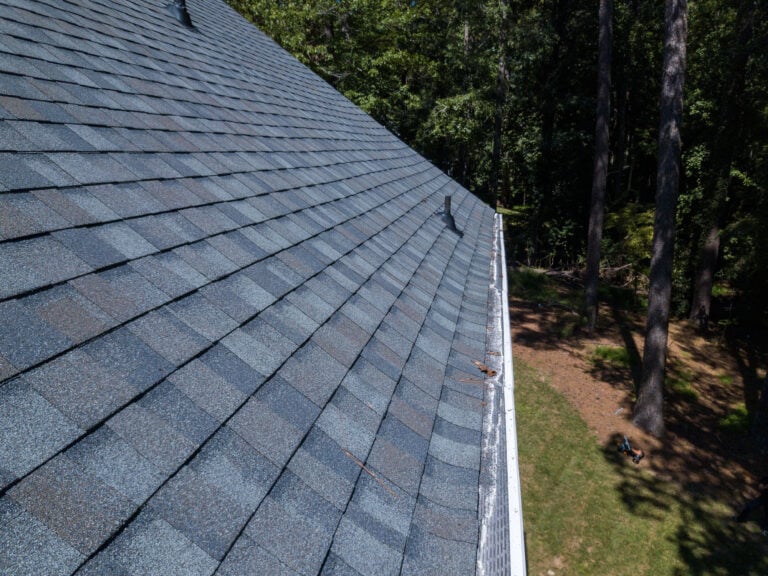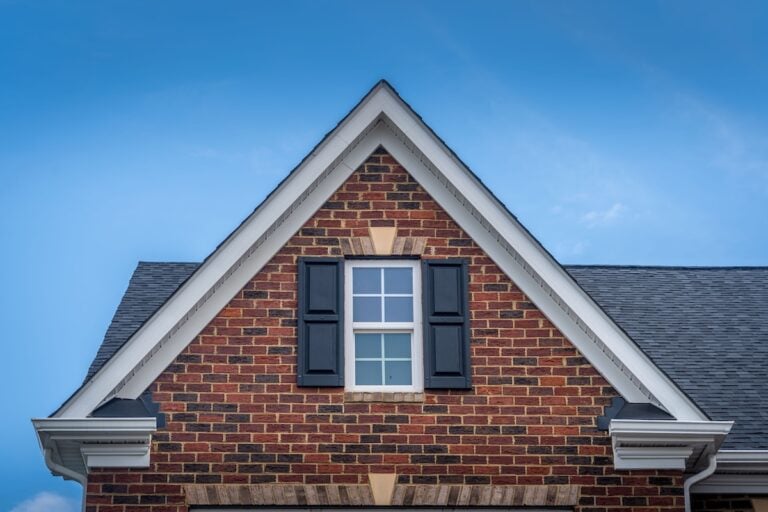Roof trusses play a crucial role in the construction of commercial buildings, offering strength, support, and versatility. Whether you’re planning a new build or upgrading an existing structure, understanding roof trusses can help you make informed decisions about your commercial property. In this blog, we’ll discuss:
- What roof trusses are
- The benefits of using roof trusses
- How roof trusses work
🤔 What Are Roof Trusses?

Roof trusses are pre-fabricated structural frameworks typically made from wood or steel. They’re designed to distribute the weight of the roof evenly across the walls of a building, ensuring stability and durability. Trusses consist of a combination of triangular shapes, which give them their strength and ability to manage heavy loads.
Types of Roof Trusses
Different types of roof trusses suit different building needs. Here are some common types used in commercial construction:
- King Post Truss: A simple design with a central vertical post and two diagonal posts, ideal for smaller spans like storage spaces or compact commercial buildings.
- Pratt Truss: Known for versatility and efficiency, it features diagonals sloping toward the center, commonly used in commercial buildings to handle loads effectively.
- Howe Truss: Perfect for larger spans like warehouses or industrial facilities, with diagonals sloping outward for even weight distribution.
- Fink Truss: Popular in residential and smaller commercial spaces, it supports steeply pitched roofs efficiently.
- Flat Truss: Best for buildings with flat roofs, often seen in retail stores and office complexes, combining support with aesthetic appeal.
✅ 6 Benefits of Roof Trusses

Roof trusses offer a range of practical benefits for commercial buildings. Here’s a breakdown of why they’re so advantageous:
1. Cost-Effective Construction
One of the biggest advantages of using trusses is the cost savings they bring to construction projects. By reducing the need for load-bearing walls or columns, trusses minimize the amount of materials required, such as wood, steel, or concrete. This not only lowers material costs but also decreases the amount of labor needed for assembly and installation. For projects with tight budgets, trusses offer an economical solution without compromising on structural integrity.
2. Time-Efficient Installation
Trusses are pre-fabricated in controlled factory environments, meaning they are designed and built before arriving at the construction site. This pre-fabrication process ensures high precision and quality, allowing for faster and smoother installation once on-site. Compared to traditional on-site construction methods, this significantly reduces project timelines and labor hours, enabling builders to stay on schedule and increase overall efficiency.
3. Superior Strength and Stability
Thanks to their triangular design, trusses are incredibly strong and stable. This shape helps distribute weight evenly across the structure, making them highly resistant to bending or warping under heavy loads. Their strength allows them to support roofs, floors, and even bridges while standing up to environmental stresses like wind, snow, or seismic activity. This makes trusses a reliable choice for projects requiring extra durability.
4. Flexibility in Design
Trusses offer remarkable design versatility, making them suitable for a wide range of construction projects. From warehouses and industrial facilities to offices and retail spaces, trusses can be customized to fit specific architectural needs. Engineers and architects can adapt the size, shape, and materials of trusses for unique layouts, ensuring both functionality and aesthetics are achieved in the final structure.
5. Eco-Friendly Option
Using engineered wood trusses is an environmentally friendly choice for construction projects. Since trusses are precision-made, waste during the production process is significantly reduced compared to traditional construction methods. Furthermore, engineered wood often comes from sustainable sources, meaning it has a lower environmental impact. Choosing trusses can help builders prioritize sustainability without sacrificing performance.
6. Open Interior Spaces
Trusses enable larger, open-plan interior spaces by eliminating the need for interior load-bearing walls. This structural advantage is ideal for projects that require flexible layouts, such as warehouses, retail stores, or event spaces. With fewer restrictions on interior design, trusses allow for creative and functional use of the available space, providing more freedom for architects and occupants alike.
👉 How Roof Trusses Work

Roof trusses are engineered to take advantage of the properties of triangles, which are inherently strong shapes due to their ability to distribute forces evenly throughout their structure. Here’s how they operate in a commercial roofing setup:
Supporting the Roof
Trusses serve as the backbone of a roofing system, forming a strong and reliable framework that supports the entire weight of the roof. By distributing this weight evenly across their interconnected components, trusses prevent issues such as sagging or structural failure, even under the pressure of heavy loads like snow or roofing materials. Without this support system, roofs would be far more susceptible to damage, leading to costly roof repairs or potential safety hazards.
Distributing the Load
Roofs are constantly exposed to external forces, including snow accumulation, strong winds, and the weight of equipment like HVAC systems or solar panels. Trusses play a critical role in evenly distributing these loads, ensuring that no single point on the roof bears excessive pressure. This balanced transfer of weight to the building’s walls not only preserves the integrity of the structure but also minimizes wear and tear, ultimately extending the lifespan of the entire building.
Providing Stability
The interconnected design of trusses is what gives them their strength and durability. Each component of the framework works in harmony with the others, creating a system that resists shifting, bending, or breaking under pressure. This collaborative design ensures that the roof remains stable, even in challenging conditions such as high winds or earthquakes. By enhancing the overall stability of the roof, trusses contribute to the safety and resilience of the structure as a whole.
🏡 Roof Trusses Explained
At Palladium Roofing, we understand that roof trusses are essential to the strength, stability, and efficiency of any commercial building. With years of expertise and a commitment to quality, our team ensures every project is executed with precision and care. From new constructions to upgrades, we provide tailored solutions that meet your unique needs.
Trust Palladium Roofing to deliver exceptional results that stand the test of time. Ready to get started? Contact us today for a free consultation and let us bring your roofing project to life.





